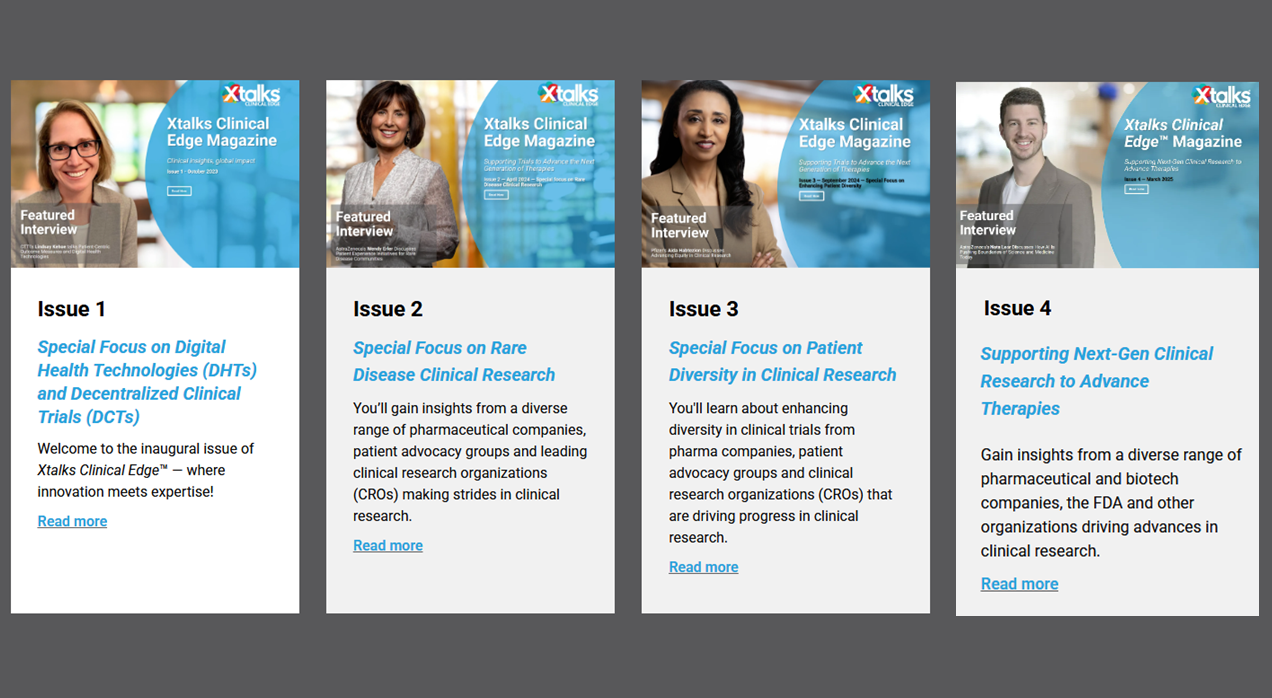The Ultimate Factor for Webinar Success
If we could identify a single aspect of a webinar to predict its success, what do you think it would be? Could it be the choice of featured speakers? The timeliness of the webinar topic? Is it how you worded the title of your webinar?
While these are all important aspects that can help a webinar succeed, they aren’t the defining factor for a webinar’s success.
In fact, it shouldn’t be too surprising to find out what separates the best performing webinars from the rest of the pack (especially when considering the title of this article).
The number one factor that determines a webinar’s success is best outlined by asking yourself the following question from your customer’s perspective:
“Is this webinar a take-home educational resource that I can apply to my job right now?”
If the answer is no, you’re targeting a registrant base who is already specifically interested in your product or service. That’s fine, as long as you’re expecting that limitation for your marketing initiative.
If the answer is yes, you’re on the path to building a relationship with your webinar audience. In building this relationship you’re also:
- Securing your organization as an asset to the webinar attendees
- Gaining an opportunity to create a two-way conversation with your potential customers
- Receiving feedback from your webinar registrants about their pain-points and questions
- Finding insights about customer behavior and interests
Building the relationship with a customer ultimately serves as a foundation for your marketing campaigns – a foundation that transforms your marketing qualified leads into sales qualified leads. You can learn more about that in our Guide to Following Up on Your Webinar Leads.
Cutting through the Noise by Being a Resource
As a marketer, you’re aiming to attract quality and warm leads and retain them for your sales team. Webinars are really the ultimate way of completing this task since they are a fantastic tool to initially gain attention, and an even better way to retain attention and interactions through ongoing content production in a webinar series. You just can’t achieve that same level of ongoing engagement through blog posts, advertisements, videos or tradeshow appearances.
Cutting through the noise and distractions of the internet is a difficult task, not to mention, cutting through the noise generated by your competitors! The best way to overcome this is to provide yourself as a resource.
A typical webinar is an hour in length so you need to provide content that is worthwhile enough to be seen as a resource for the attendee. Why else would you spend an entire hour of time to attend a webinar unless you expect to get something useful out of it?
For instance, you may want to learn more about content marketing with this very helpful webinar on how to create demand with content marketing:
https://www.youtube.com/watch?v=XyTX-qJDozc
If you look at your webinar content though your customer’s eyes instead of directly explaining your product or service, you’ll find you can achieve your goals much more effectively. That said, during a webinar you’ll also have the opportunity to weave in the story of how your company solves problems for the topic at hand.
Here’s a very unadorned example to illustrate my point:
Pretend you are a potential customer who found the time to attend only one of two 60-minute webinars:
- Webinar A is titled, “Look at my product”
- Webinar B is titled, “Learn how to solve and/or understand a problem you’re experiencing right now while looking at my product”
Which would you attend? Webinar B is the obvious choice since it’s a resource that is customer-centric in its nature.
Before we get deeper into customer-centricity, let’s actually take a step back and define what it means to launch a customer-centric marketing strategy.
What is a Customer-Centric Marketing Strategy?
We define customer-centric marketing strategies as understanding customer values and demands in order to resolve them through the design of your product or service experience, as well as through the marketing tactics that you apply. This ultimately drives satisfaction for your customers and sales for your organization.
These marketing initiatives should be carried out from the awareness phase through to the customer retention phase of the buying cycle. Being able to segment your audience and personalize your content is key to this customer-centric marketing strategy.
Here’s a fantastic description of a customer-centric approach:
Incorporating Webinars into Your Customer-Centric Marketing Strategy
Moving forward with a webinar series without an overall customer-centric strategic plan can sometimes result in falling back to a product-centric approach, which can yield limited results.
A webinar series that incorporates a customer-centric marketing strategy allows you to obtain ongoing customer or prospect data, fuel communication and feedback from those individuals and gives your marketing initiatives a way to provide insight for your organization.
An obvious point in a webinar strategy, but one that is often overlooked, is that your attendees’ experience during a webinar should be a positive interaction rather than a neutral (or negative!) one that fosters loyalty and brand evangelism.
So, rating your content on a scale of 1 to 10 to determine if the customer experience is likely to be positive, before you launch your webinar campaign, is a very worthwhile task.
Building a Customer-Centric Marketing Strategy for Your Webinars
As we’ve described above, these positive experiences are, for the most part, easily accomplished by becoming a free resource to a prospect, which works to nurture your relationship with them through the useful content that you provide during your webinar.
So far, we’ve outlined that being an ongoing content resource for your prospects and customers is the most important factor in your webinar series’ success.
Hopefully, you’re already well on your way in this strategy and webinars can align nicely into your overall plan. If not, let’s look at an overview of steps within a typical plan and how these steps might be carried out.
1) Segment your audience according to the sales cycle
Identifying what type of people are involved in the final sale of your product or service is essential when trying to target content. This sales cycle blog post might be helpful in the process.
2) Create buyer personas
Identify who has direct say and who has influence in helping finalize a decision for your product or service. You can get help creating those buyer personas using our blog post:
“Why You Should Be Constructing Buyer Personas When Hosting A Webinar (& How To Do It)”
3) Identify the values, demands and triggers for potential customers
What do your customers experience and why are they looking for content, or how do they find relevant content on the internet?
4) Map out your buyer journey
If you haven’t done that yet, here are a number of resources that you can use to map out what you’ve outlined in the previous steps.
- 6 Different Types of Buyer Journey Maps
- From Skeptical Prospect to Loyal Customer: How to Map Your Buyer’s Journey
- Understanding the Buyer’s Journey
- 4 Ways to Model the Buyer’s Journey
5) Assign content according to these values, demands and triggers
This is where the type of content really matters. Using webinars as your best marketing tool, adapt your content to serve as a greater educational tool as we’ve described above and find a way to incorporate your product or service into that content.
6) Organize your strategy by creating a content distribution plan
While webinars should be at the core of your content generation machine, use blog posts, whitepapers and videos to round out the types of content you have available. Repurpose your webinar content to acquire greater reach. Use our brand positioning and content distribution worksheet to help you along.
7) Audit your current content plan for gaps
Find out what holes might be missing by identifying what content you have and if you have every type of content in place.
8) Create a webinar series according to your customer-centric plan
You should be finding a story thread from what you’ve discovered from steps 1-5. Use this story for each webinar series. This should be targeting a select group of potential customers along their journey.
9) Before launching your first webinar, rate your content from 1 to 10, as likely to be a positive, or neutral (or even the unlikely negative) experience for the attendee
Adjust as necessary before your webinar event page is launched.
10) After you’ve completed at least 2 webinars, A/B Test your webinars
Test and improve upon your next webinar(s) in the series
11) Use tools like pre-registration questions, poll questions and the Q&A session to receive insights from your webinar registrants
Use these insights to adapt and refine your customer-centric strategy
Tips to Optimize your Customer-Centric Marketing Strategy
Creating an ongoing relationship through webinar (and related) content generation using a customer-centric method is a great step forward from product-centric marketing. In doing so, you’re ultimately driving the customer life-time value higher. Here are a few tips to help you move this initiative forward:
-
- Make sure you have a data acquisition plan in place to quantify what you’ve done to move the strategy forward. Measure customer life time value as a raw measure of your efforts’ success.
- Look beyond the data. Not all results are easily quantifiable. How do you accurately measure the meaningfulness of an interaction and how does this balance with the number of interactions you had? This isn’t a straightforward equation you can quantify from the data you’ve collected. Sometimes your instincts can tell you more than a spreadsheet.
- Keep on top of industry trends and remain agile. What you may have outlined in your strategy may have been important six months ago, but something more pressing may be top-of-mind currently for your customers. Make sure you can adapt to these changes easily. Find insights you may have not gathered in your webinars elsewhere, as well.
- Adapting to your customer base means you’ll need great communication with your customers and within your organization. This means understanding the wants and needs across a range of departments. This might mean opening up data sharing across your organization.
- Make sure you have the resources to deal with the data you obtain and have the ability to use it once you’ve acquired it.
Using a Consumer-Centric Marketing Strategy to be Competitive
By treating your webinar content as an ongoing resource for your potential customers, you’re providing an additional reason for them to attend your webinars again and again. This can ultimately build a positive relationship with your audience which fosters interaction and loyalty to your organization. Having the ability to adapt from the insights you receive during your webinars gives you an advantage over the competition who isn’t using this approach.
This is why we’ve seen some of the most successful companies reach out to Xtalks for help in marketing and producing their webinar content while using this customer-centric approach to marketing. If you have questions about how to get started with webinars or expand what you’ve already completed, make sure to reach out to Xtalks staff here












Join or login to leave a comment
JOIN LOGIN